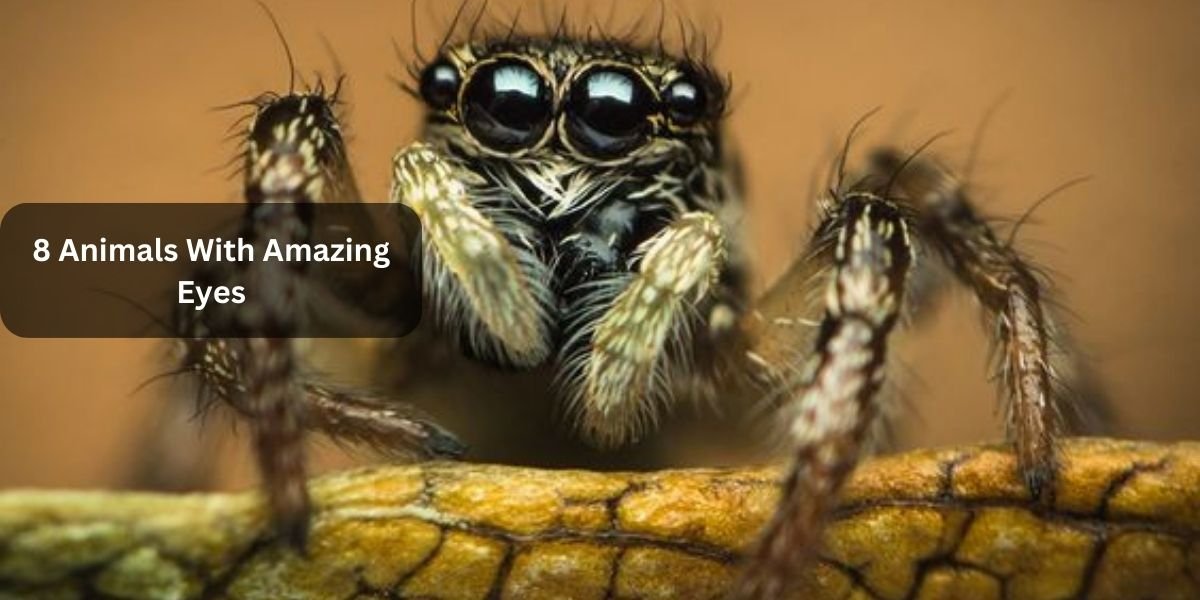Introduction:
When we think about the wonders of the animal kingdom, we often marvel at the diversity of species and their unique adaptations. One fascinating aspect that often goes unnoticed is the incredible variety of eyes found in different animals. From keen nocturnal vision to mesmerizing colors, the animal kingdom boasts an array of ocular wonders. In this article, we’ll delve into the captivating world of eight animals with truly amazing eyes.
1. The Mantis Shrimp’s Multifaceted Marvels
Prepare to be amazed by the Mantis Shrimp, a small marine creature with eyes that defy imagination. With over 12 to 16 types of photoreceptor cells, they perceive colors beyond the human spectrum. How does their vision compare to ours, and what purpose do those intricate eyes serve in their underwater world?
2. Owl Eyes: Masters of Nocturnal Vision

Owls are renowned for their ability to navigate the night with precision, thanks to their extraordinary eyes. What makes owl eyes so unique, and how do they contribute to the silent and deadly hunting techniques of these majestic birds of prey?
3. Chameleon Eyes: A Colorful Kaleidoscope

Chameleons are famous for their color-changing abilities, but it’s their eyes that truly steal the show. Discover the secrets behind their independent eye movement, providing them with an almost 360-degree field of view. How do chameleon eyes differ from other reptiles?
4. The Enigma of Cuttlefish Eyes
Cuttlefish, close relatives of squids and octopuses, possess eyes that seem almost otherworldly. Dive into the world of these cephalopods and explore how their eyes play a crucial role in communication, camouflage, and hunting beneath the waves.
5. The Mesmerizing Eyes of Peacocks

Peacocks are renowned for their flamboyant displays, and their eyes are no exception. Uncover the science behind the vivid colors of peacock feathers and the role their eyes play in courtship rituals. What purpose do these dazzling eyes serve in the peacock’s social dynamics?
6. The Night Vision of Geckos

Geckos, with their tiny size and sticky feet, possess a unique set of eyes adapted for low-light conditions. Delve into the world of these nocturnal creatures and explore the secrets of their night vision. How do gecko eyes enable them to thrive in the dark?
7. The Gaze of the Cutest: Tarsier Eyes
:max_bytes(150000):strip_icc()/GettyImages-1203883498-9796c8590a2c4ad9ac3a74ca2cb47d4e.jpg)
Tarsiers, with their enormous eyes relative to their body size, are undeniably adorable. But what lies behind those large, expressive eyes? Uncover the role of tarsier eyes in their nocturnal lifestyle and their extraordinary ability to detect prey in the dark.
8. The Eyes of the Deep: Anglerfish Illumination

In the abyssal depths of the ocean, the anglerfish reigns supreme with its unique adaptation—bioluminescent lures. Explore the fascinating world of anglerfish eyes and how they utilize light to attract prey. What role do these glowing eyes play in the pitch-black depths of the ocean?
Conclusion:
The animal kingdom’s diverse ocular wonders remind us of the extraordinary adaptations that have evolved over millions of years. From the Mantis Shrimp’s dazzling array of colors to the night vision of owls and geckos, each species has developed eyes perfectly suited to its environment and way of life. The next time you encounter these creatures, take a moment to appreciate the incredible diversity hidden within their eyes—the windows to their souls.
FAQs:
Q1: Can Mantis Shrimp see more colors than humans?
Yes, Mantis Shrimp can perceive a broader spectrum of colors, extending into ultraviolet light, far beyond the capabilities of the human eye.
Q2: How do chameleons change the color of their eyes?
Chameleons change the color of their eyes through the movement of pigmented cells within the iris, allowing them to adapt their eye color to their surroundings.
Q3: Why are peacock feathers so colorful?
The vibrant colors of peacock feathers are the result of microscopic crystal-like structures that reflect and refract light, creating the dazzling hues we see.
Q4: Do tarsiers have good eyesight?
Yes, tarsiers have excellent night vision, allowing them to navigate and hunt efficiently in low-light conditions.



